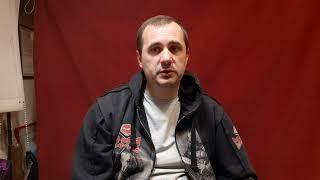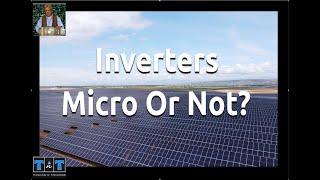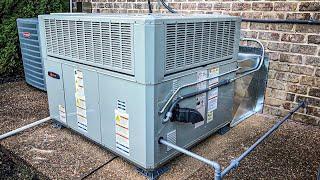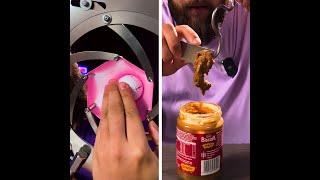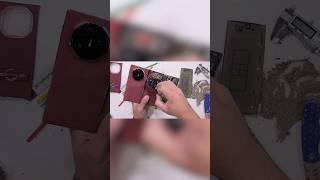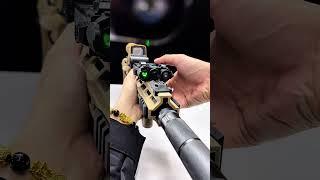
2262 Microinverters Where Do They Come From And Are They A Good Idea
Комментарии:

surely many household appliances actually run on a low DC voltage nowadays, computers phones, even most washing machines and TV's nowadays all take the mains power , transform it down and then rectify it. so many household items are actually running at low DC voltages, with all the losses involved in transforming and rectification, anything that is run off its own power brick is converting back down to a DC voltage- So why dont we do away with the electrical losses involved in creating AC from DC - then converting it back again - the only stumbling block put in our way is manufactures of these items, who effectively will only let you put mains AC in, if they has an external DC input socket that could be plugged into a DC supply, at low voltage, then the solar panels could supply these sockets easily enough and the only electronics required would be dc dc converters or voltage limiting circuits, so many less components so a cheaper manufacturing process.
Ответить
On my camper, I use solar just to charge batteries. Then I use 12vdc or an inverter from there.
Ответить
I like distribution almost as much as I like decoupling and standards. If the industry could standardize panel sizes, outputs, mounting brackets, inverter housing form factors, etc, then we could have the best of both worlds -- inverters decoupled from panels based on manufacturer, mountable on panels regardless of manufacturer. Chasing profits based upon trivial incompatibilities tied up in intellectual property is petty and small minded. We need these distributed renewable scalable power options to help save life on the planet. Such a critical success factor as survival shouldn't be left to the profiteering d**k measuring contest of the human ego, as rivals in industry try to one-up each other.
Ответить
Grow trees use gasifier to produce electricity much more efficient
Ответить
Can you put a 600watt led light in sunlight and get any electrical current out of the power cable which you would be putting power in just a thought
Ответить
Excellent video.
Ответить
How stupid is all of our electronic systems? Show me a device in the house that doesn’t convert ac to Dc… so switch from dc, to ac so it can switch BACK to dc… ffs, we aren’t going to make it as a species
Ответить
But doesn't an MPPT inverter also do this and its ground based? My dad's friend is having some problems with an old system and the company is not lending support, and he is suffering from macular degeneration. Here's what they say about an MPPT, so I wonder: An MPPT (Maximum Power Point Tracking) inverter is a type of solar power inverter that optimizes the energy conversion efficiency of solar panels by tracking the maximum power point of the solar array. This technology allows the inverter to extract the maximum possible power from the solar panels, ensuring efficient energy conversion and reducing energy losses. MPPT inverters are commonly used in off-grid and grid-tied solar power systems, providing a reliable and efficient way to convert solar energy into usable electrical power. These inverters are designed to work with solar charge controllers, which regulate the charging of batteries in off-grid systems, further enhancing the overall performance and efficiency of the solar power system" END QUOTE. So from panels, to MPPT inverter, the mppt inverter goes to the charge controller, which goes to the batteries. Erm. But like... so that is energy going in. But so energy goes like out of the MPPT to devices? So it goes rom panel to mppt to charge controller to battery. and does the charge controller or the mppt "realise" that the devices need battery power?
Ответить
I use Microinverters for almost 10years. I like easy instalation. Main drawback for me is self consumption. They need 25+ Volts to start working. So in winter conditions their performance is worse, because you can't connect strings of pannels to them. So with string inverters you can reach start voltage much sooner, and get at least some production in bad conditions.
Ответить
I often think about putting electricity into things that generate electricity ... 🤔
Watching this video made me wonder just why UK engineering is now known for being specialists rather than "world leading".
(Or, "world beating", as some say.)
When RollsRoyce came out with the fan/turbine blade "growing" method, I was majorly impressed (I'd had similar ideas about growing objects made out of diamond but that was a sci-fi application).
Dyson hasn't been an inspiration to me, unlike the people behind the Henry vacuum cleaners. I don't know if Dyson is a creative or hard-working knowledgeable engineer in the way that Trevor Bayliss (a great human, too) was.
Yet, I'm constantly amazed at Robert's knowledge and interest in all science and engineering (and sometimes history).
A healthy STEM economy/culture needs the kind of thinking that Robert shares with us. Much better than Steve Jobs showing off aesthetic designs and interfaces that pander to the vanity of wealthy consumers and posers (though more profitable!).
Robert's a national treasure.

HEY PROFESSOR SMITH The inverter type depends on the loads that will be powered When going into a grid (grid tied) made up of TONS of transformers and even the thousands of miles of wire Micro inverters and high freq inverters will work out ok no matter the load This is because the grid is providing (instant magnetic push flux) similar to a giant flywheel So if any of your loads have a very high starting current the grid will provide it when grid tied and using micro inverters But if you are off grid and have high start up currant loads your inverter and batteries has to supply it The start up currant could be over 10 times higher than running wattage or currant High frequency inverters with have small light transformers switched at high frequency to raise the voltage There is very little flux stored in the magnetic core of theses small light transformer cores So the high frequency inverter has to get that instant amperage of start up load mainly from your battery's There is lots of components in high frequency that that amperage spike has to go through to make it to your load Boosting mosfets switching dc from solar panels/batteries into high frequency ac then though diodes to back to dc to be stored in high voltage 300 or 400 volt dc capacitors Then through switches like mosfets to turn high voltage dc from capacitors into lower 120 or 240 volt 50 or 60hz This is simplified there is lots of other components that makes all that happen Point is high frequency inverters has tons of components that spike has to go though to get to your starting current giant instant load Every time its hard on every one of them components Low frequency inverter uses a big heavy iron core transformer that hold lots of flux to step up the voltage So the low dc voltage from your solar panels/batteries goes through switches like mosfets to turn to low voltage ac This low voltage ac is stepped up to high voltage ac through the big heavy iron core transformer It comes out of transformer at 120volt or 240 volt 50 or 60 hz ac There for it has way less components to go bad or to be hard on With the added flux needed to start big loads stored in the core of the big transformer It is a lie that all low frequency inverters has a high idle losses I built a 10k low frequency inverter maybe 5 or 6 years ago It has been running 24/7 in harsh conditions powering apartment over a garage It powers them both big saws welders and all zero problems It usages around 15 watts at idle that's fully powered up idle Its all about how you wind the transformer and your choke I have people in the inverter bezz that have tested my wound transformers and cant find any losess But still say it has losses imposable not to have LOL LOL The grids inductance/magnetic flux can be thought of as a flywheel or pushing a person on a swing There is lots of force that will knock you a flying if you step in front of some one swinging on a swing All the switching magnetic flux in the transformers and lines work just like person on the swing It takes very little input to keep them swinging if your push is timed correctly Transformers/ power line works the same the push is at 50 or 60 hz 120 volt or 240 volt ac The loads you need to start up is what makes one inverter WAY better than other also the way smaller componet count OK thats all you need to know to make good choice!!!
Ответить
I run circles around this. What a pity.
Ответить
We use microinverters because parts of our solar array get shading at various times of the day. This way a panel's output that is reduced because of shade does not impact the other panels on the array.
Ответить
Interesting RMS.
First Point
Definitions are an Issue here. I Would Argue Most of the Current Invertors are Micro Invertors.
The World Still has No Large Scale Solar Power Stations.
Of Course the Definition of Distributed System is Also Subject to Size Considerations.
Second Point.
AC Synchronization is an Issue for Micro Invertors Per Solar Panel.
This is More than Likely the Biggest Reason They Need to Communicate with one another.
But of Course this Means Coms Electronics is Now Also Needed along with Invertor Electronics. This Increases the Likelyhood of Individual Solar Panel Failure. Hence if Electronics can be Mass Produced with 25 Year Gaurantees, then Maybe Micro is Ok.
Third Point
The Argument of Rotating Electrics Verses Stationary Electronics is a Much Closer Contest than Many People Think. In Fact Sometimes the Rotating Electrics is Superior.
Further, We are Yet to See, or Hear of DC Motor Driven AC Generators Used with Medium to Large Solar Panel Arrays. Maybe I will have to do this.
Fourth Point
At this Stage, I Think Micro Invertor Solar Panels is a Reasonable, Even Good Idea for Small Solar Systems.
RMS, Thanks for Your Knowledge Again.

We need a linxus or Android system of standardized microinverters and other such electronics so no matter what you can plug in and update and it would all just work.
Ответить
There is another aspect to using nicroinverters, and that is local electricity authority codes. I was told by a young tech who was installing a microinverter system at my house that his next job was likely to be a nightmare. He said it was to install solar panels on the roof of a two story house but using a central inverter. Local code stipulates that if you run a DC high voltage cable, it must be in a metal conduit. So he would have to run metal conduits from the roof to the ground floor before any cabling work could be done. However, if the cable is AC, it only needs to be in a plastic conduit (which could be flexible) with the benefits of lower initial cost and less installation problems. He much preferred microinverter installations as they involved less complicated wiring and conduit work.
Ответить
I am with you on not wanting my electronics on the roof. I think that the simpler the better. Granted there is a single point of failure if you use one big inverter as opposed to micro inverters, there is still the ability to use a greater mix of equipment such as various solar panels without the need to match the micro inverters. Just my 2 cents worth. Cheers Rob
Ответить
We run our panels through regulators then batteries then inverter…
Ответить
I would not use micro inverters. Just run DC to your Inverter. It will charge your batteries and use that DC to make AC. If you have shading or a bad panel then fix that problem. The newer panels use diodes that break up the cells into groups so you don't lose the entire panel output when shaded. I am more in favor of ground mounted panels so I would not have the problem of rules with roof mounted.
Ответить
that is if you don't have an accumulator, so the micro inverter option also limits the whole system to be upgraded in the future
Ответить
you left a HUGE point with the microinverters, they NEED the grid to function, the part that they cut out is the frequency matching and they match what the grid does.
so it might be all the distributed system you want, but if the grid goes so does your solar system.

Some AIO hybrid string inverters have provisions included to work with micro inverters.
Ответить
I like simple and less parts to fail
Ответить
Hello Robert, Good Day ! : ) . Robert, what is your take on the "EnergyDome'' proposed Utility scale backup power electric generation concept. Does the Round Trip Efficiency (RTE) chemistry seem a sound way to store Renewable Energy, then have sufficient Electrical Energy Current Capacity to be released to the electric transmission grid to balance load when wind, and solar are not available ? Is the cost to benefit ratio there ? I ask you because this seems a simple system that is deployable in mass and at low cost if the reserve capacity is robust enough. You U.S. Dollar / Pound to watt . Thank you for any of your valuable time spent in research efforts done to answer these questions using your vast insight abilities. As always you, and Luke's efforts are much appreciated here.
Ответить
My local (Dallas, Texas) installers wouldn't do microinverters. They said the temperatures here are too harsh and cause accelerated failures. So i went with a DC optimizer setup.
Ответить
don't microinverters introduce inefficiency when charging batteries? DC=>AC=>DC
Ответить
Heat is a problem for both solar panels and microinverters (and electronics in general). Heat alone can steal 5%-10% of a solar system's capacity. The question isn't microinverters versus string inverters, but instead must focus on establishing and maintaining overall efficiency.
My feed delivers to me all things solar, and agrivoltaics are always included. Recently, vertical agrivoltaics has been getting attention because the expected losses due to the vertical orientation were not seen! Instead, the actual production was 5% better than expected, which eventually was traced to the vertical panels running cooler, but also running cleaner, as less dirt and dust was deposited on them. This also applies to electronics co-located with the solar panels.
I had been postponing my home solar because my roof has nearly a decade of good use remaining. I didn't want to install a solar system on my roof, only to remove and reinstall it several years later when the roof needed replacing. That seems to be a waste of labor and money. Sure, I could replace my roof sooner, but that also seemed wasteful to me.
But my fence also needs replacing. What about incorporating vertical solar in my fence? I ran the numbers, and I'd need about half of the fence (the east-west part that faced the street) to be bifacial panels, with the rest being conventional single-face panels (that faced the neighbors).
I ran the numbers, and soon found that I'd need a few additional panels, but I could do the installation myself, except for an electrician to make the final connections. While solar fence posts cost more than roof installation systems, the labor savings and ease of access make the vertical fence solution hugely preferred.

I would love modular panels with everything included (battery, charger and inverter). Maby even connector for external generator. So I could just buy and stack them like regular batteries.
Ответить
For off grid I'd go with just a charge controller to a battery and then run what you can off of DC like lighting and have an inverter for power outlets, this would be far more efficient than micro inverters. However if grid tied then pay your money and take your choice personally I'd still go with the same setup so I can change out any failed components much easier.
Ответить
Factory direct miroinverters are soo cheap and accessible for $70 for a grid tie micro inverter you can have a ground mount or balcony solar anywhere instantly! It is just plug and play for renter or home owners ,best to go with a provider with metrics on there app ,if you dont want to push any electricity into the grid ,you can just put a consumption only sensor on your inverter also meaning your inverter will also last much longer.. . WIN WIN either way🤩🌞
Ответить
Ac coupling is now catching on so the need for long strings can be avoided if desired.
Ответить
Hey Robert, I’ve been watching your videos for a while now, years, I really like what you are doing, I’m currently working on a circuit that I think you would be very interested in.. I think I’ve built an electron pump? I think you would find it very fascinating.. I can send you any information on it if you choose to investigate the effects? Thank you!
Ответить
Electromechanical inverters,charge controllers, voltage regulators and adjustable bimetal power cutoffs for overcharging FTW....
Ответить
Got both...
Just running out some tests on them and performance.
There are pros and cons to both and some faff.
String inverter will take 450v PV. The micro 80v.
They are about the same in current.
It is more a matter of where they go, and roofs can get hot both inside and outside and the new regs may put an end to many installs in the loft.
The on roof isn't so bad, as would the balcony systems. But the problem with micro inverters is that they make AC but dont have a battery.
So you only save when you use. And you can't store it unless you get a AC coupled inverter charger for adding a battery. So it won't always be the best price if you want a 'fit your life system '.
If you wanted to give solar a try, then why not, but if you want solar to workm, your best off going down the hybrid route.
Making solar all day when your at work, and the sun's down by the time you get home, well that's pretty useless. Unless you small scale to cover the day time loads of a empty home which is going to be small. But then the idea would be to lower your bills.
I'm having a play, I've a grid tied string, and a off grid system and trying out this micro inverter set up...

having 20 micro inverters to service a 20 panel installation is the peak of idiocy. Every inverter has a base power draw that is multiplied 20 times with micros.
They are useful only for installations so small where it's not beneficial to purchase a separate inverter. So 1-3 panel ones.

Living in Ohio I doubt the benefit of solar , too many cloudy days, temperature variations, tinkered with them years ago , wasn't impressed. What ever happened to Kodak's flexible cells, all the rage on popular electronics over. 45 years ago. Lightweight plastic. Wanted to get some and apply to a radio controlled plane ? Alas many systems show sever losses after a short time.
Ответить
In my house, I run D.C to D.C due to power loss during inversion and also another power loss converting it back to D.C. So I use Buck and Boost Converter to power all the D.C appliance that uses A.C adapter. My Bulbs are now 12V D.C while things like TV and Refrigerator goes to Inverter. Honestly, there is a lot of power saved using this method. I can still turn off my inverter to save more power then use my PC which runs on D.C to watch videos.
Ответить
1 tiny point about micro inverters being "exposed to the elements" there is a about 2m² roof over it in the form of the solar panel itself.
Ответить
You learned something new every day... I thought an inverter would make the solar panel not work because the panel would end up upside down in an inverted state.
Ответить
They keep the DC line length to virtually nothing which reduces DC line loss and if one goes down the rest are not affected.
Ответить
They would be great for panel arrays remote from the house as AC is more conveniently transported over lighter wiring. But how are the microinverters synchronised ?
Ответить
no-one seems to talk about the difficulties of bodging up leaky roofs
Ответить
I am the owner of several solar systems at my home and help maintain several more at my parents' and grandparents' homes. Among them, one with an inverter and optimizers, one with an inverter without optimizers and several systems with microinverters.
My observations over the years:
a) Systems with inverters produce more per year than systems with microinverters of the same power. Even when shadows fall on part of the panels, modern inverters are able to find the right working point (global mppt) to minimize the influence of partial shadowing.
b) If grid code does not require panel level disconnect, optimizers do not pay off. Especially with shingled panels.
c) Quality microinverters of the same power cost significantly more than a single inverter of 5 kW or more. The cheapest and most primitive microinverters without any control may cost a little less, but I would never think of installing them on the roof. When microinverters are installed somewhere further from the panels, the price of additional connectors, combiner boxes and cables starts to add up quickly.
d) System scalability and resilience with microinverters is an advantage. But not that big, because inverters fail much less often. Also, if the system is being expanded with only a few panels, the same inverter is usually suitable. When expanding in large quantities, you can buy a second inverter and have a resilient, simpler and cheaper system than with a bunch of microinverters.
e) Microinverters have their niche in a small systems. For example a simple permit from the local grid company is enough for systems up to 800W in my country and such microsystem can be installed by anyone even on their balcony.

I'm voting for team "big single accessible inverter".
Electronics usually last 10 to 20 years indoors.
On the roof where humidity vary from 0 to 100% several times each year. And temperature from negative 25*C to positive 40*C can't be healthy. I give it 5 to 10 years before microinverters break.

The problem is that most of our electronics used DC and very low voltage. So converting DC from the solar panels into AC and then back into DC again is hugely wasteful.Maybe we're looking at this the wrong way. Maybe the power in our houses should be DC high voltage around 250VDC.
Ответить
Maybe there's no good or bad system. If you do not want to have batteries, you'd better use microinverters (but note you can still have a virtual battery -at least in some countries-)
Ответить
100 amp 240v ac to my house seems so out dated when i am looking at the dc voltage of the power tools and e bikes etc in it ....micro inverters and battery storage??. Few i wish i could give up work and just test out all the variables in my head..,thanks for a great informative article Robert , sincerely hope you battle onward X
Ответить
But when you add a battery to such a system stuff gets inefficient because you convert the electricity from dc at the solar panels to ac using the microinverters and then back to dc to charge a battery with it. In such a case it would be better if we had micro mppt chargers which could directly charge the battery with dc. Those might also be cheaper than microinverters because they don't have to handle any high voltage like 220V or 120V but just the <50V of the solar panel as an input and the 48V lifepo4 battery pack as an output.
This would also have the added benefit of being off-grid capable as the micro mppt chargers would only need the battery and not the grid to output power.

cant add a battery to micro inverters unless you add extra inverters to the battery
Ответить
You can use DC voltage almost everywhere in your home nowadays, B'cos they have a Switch mode power supply. And if not. Put the micro inverter only there ;)
Ответить